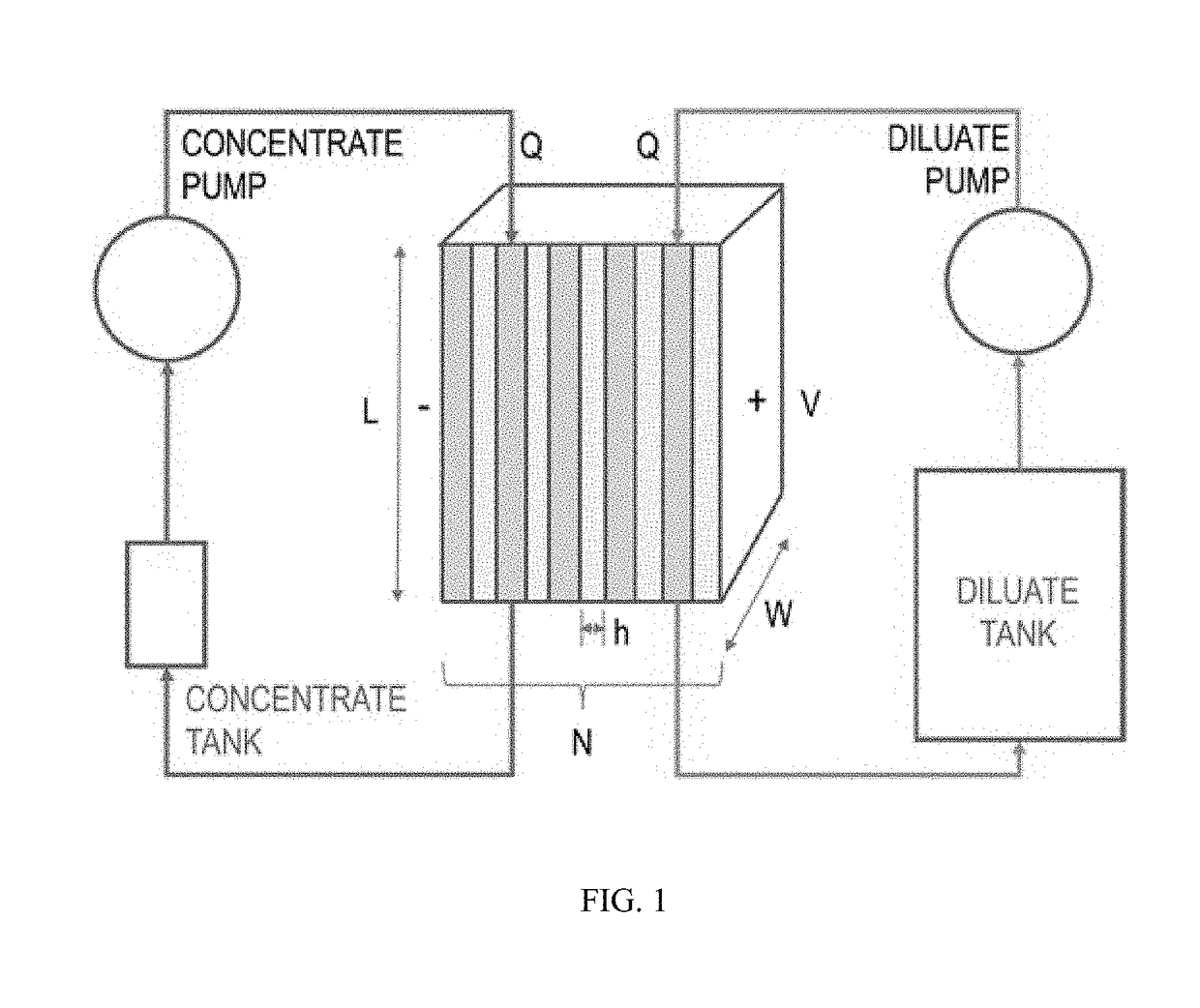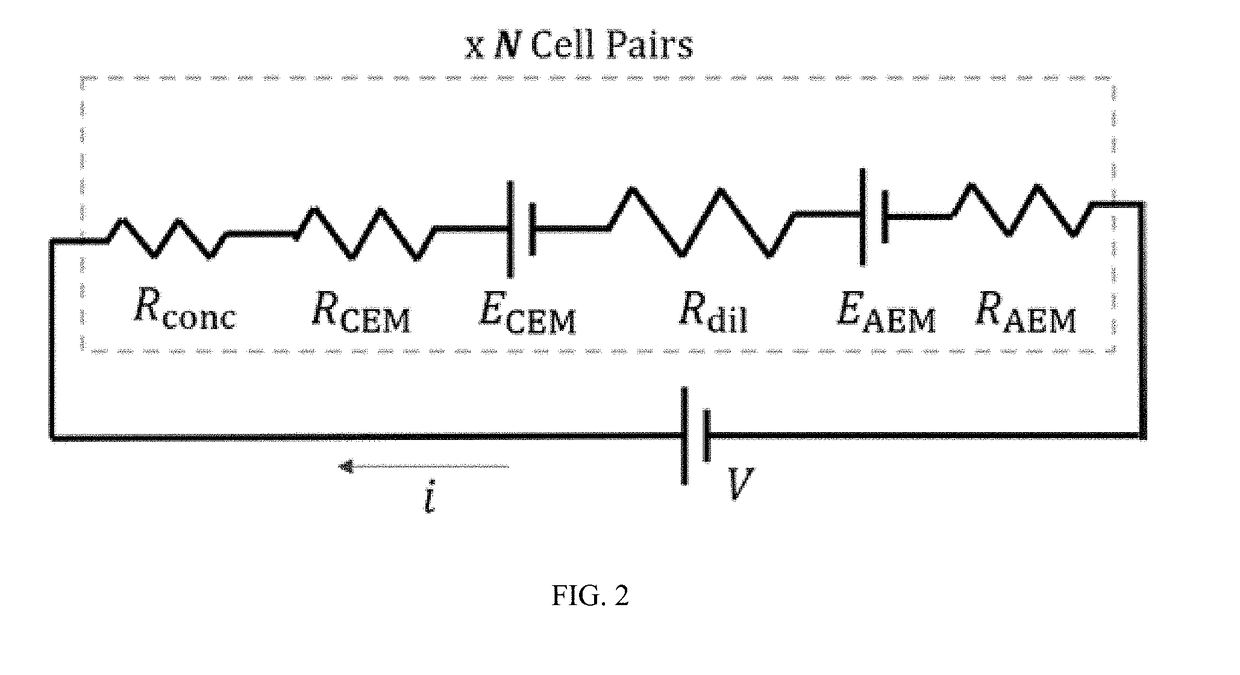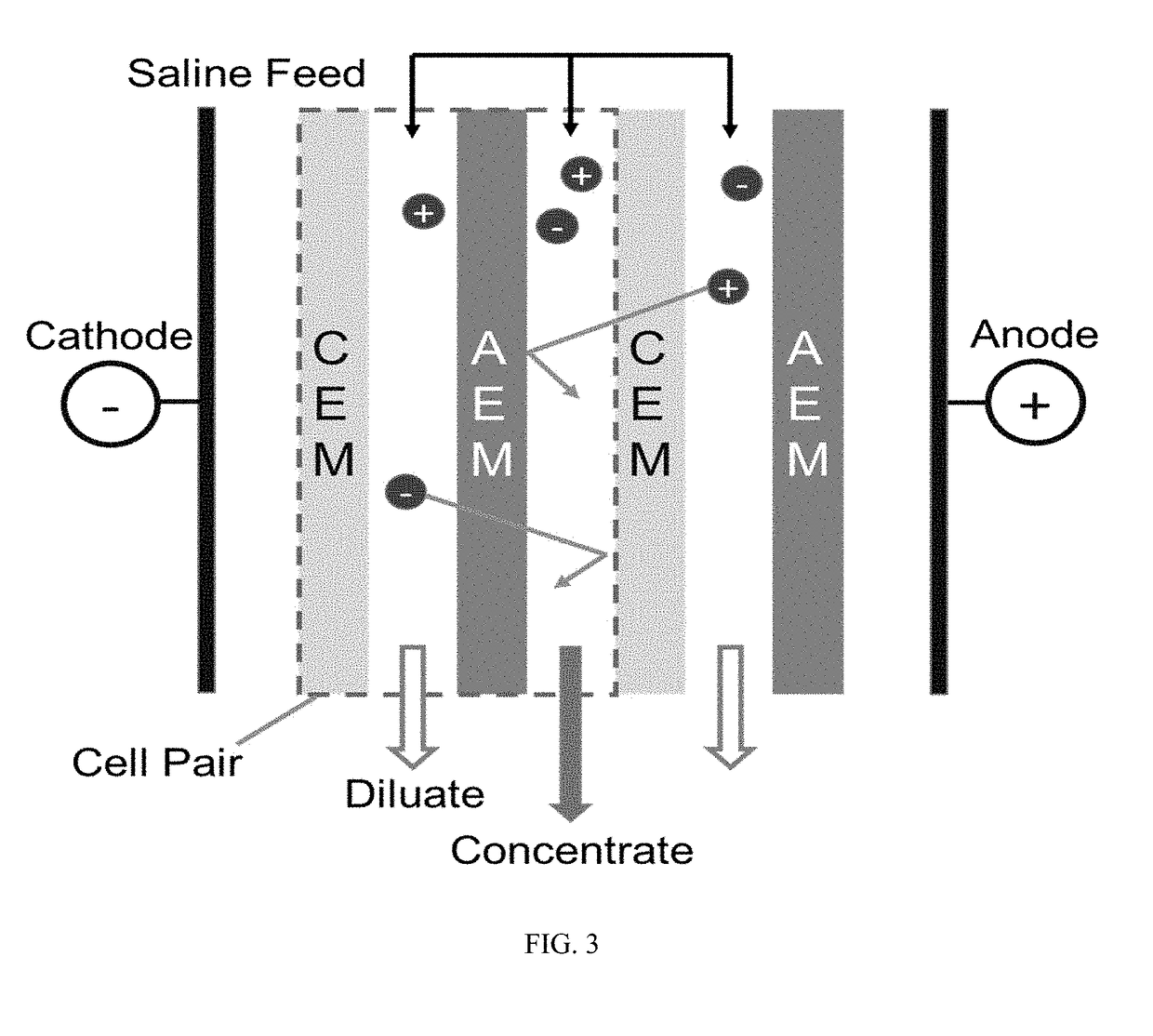Electrodialysis systems and methods for desalination
- Summary
- Abstract
- Description
- Claims
- Application Information
AI Technical Summary
Benefits of technology
Problems solved by technology
Method used
Image
Examples
example 1
Optimal Design of a Batch Electrodialysis System for Domestic Desalination
[0141]In this work, we used simulation to investigate how a domestic batch ED system could be designed to minimize cost while providing production rates and product water concentrations that are suitable for domestic use. In particular, we aimed to address the following:[0142]1. How should a domestic ED system be configured to minimize cost?[0143]2. How do production rate and concentration requirements affect the design?[0144]3. What are the primary contributors to the cost?
II. System Description
[0145]The batch ED system (FIG. 1) proposed by Nayar et al. [7] and analyzed here consists of two primary flow circuits: one for the diluate, and the other for the concentrate. At the start of each batch process, both tanks hold feedwater at the same concentration. The relative volume of water in the diluate versus the concentrate circuits governs the recovery ratio of the process. During desalination, a voltage V is a...
example 2
Cost-Optimal Design of a Batch Electrodialysis System For Domestic Desalination of Brackish Groundwater
[0214]This study presents the pareto-optimal design of a domestic point-of-use batch electrodialysis (ED) system. Specifically, the optimal geometry, flow-rates, and applied voltage for total cost minimization were explored for varying production rate (9-15 L / hr) and product concentration (100-300 mg / L) requirements, while feed concentration and recovery ratio were maintained at 2000 mg / L and 90%, respectively. Capital cost dominated over energetic cost; hence, optimal designs maximized current density. Capital cost was significantly higher for 100 mg / L systems, than 200 and 300 mg / L: $141 vs. $93 and $79, at 12±0.5 L / hr of production. Pumps were an important consideration, contributing up to 46% of the total cost. Large membrane length-to-width aspect ratios (3.5:1 to 6:1) and thin channels (0.30-0.33 mm) promoted high current densities, and 11-21 cm / s velocities optimized mass tr...
example 3
Increasing the Speed of Brackish Water Batch Electrodialysis Desalination Using Open-Loop Voltage Control
[0358]Several studies have been performed on the design and optimization of batch ED systems for brackish water desalination. Most authors suggest operating at high current densities i to reduce the membrane area required for a given salt removal rate. Since the capital cost CC scales with the membrane area requirement,
CC˜1 / i.
Therefore, the capital cost of the system can be decreased by increasing current density. However, few have suggested controlling the voltage control to maximize the current density as a function of diluate concentration. As a result, controller descriptions and experimental comparisons with standard operation are lacking. We speculate that at least for large-scale systems, this solution is often neglected because:[0359]Cost and difficulty of implementation when dealing with high power.[0360]Industrial operations are often more concerned about the energetic ...
PUM
 Login to View More
Login to View More Abstract
Description
Claims
Application Information
 Login to View More
Login to View More - R&D
- Intellectual Property
- Life Sciences
- Materials
- Tech Scout
- Unparalleled Data Quality
- Higher Quality Content
- 60% Fewer Hallucinations
Browse by: Latest US Patents, China's latest patents, Technical Efficacy Thesaurus, Application Domain, Technology Topic, Popular Technical Reports.
© 2025 PatSnap. All rights reserved.Legal|Privacy policy|Modern Slavery Act Transparency Statement|Sitemap|About US| Contact US: help@patsnap.com



